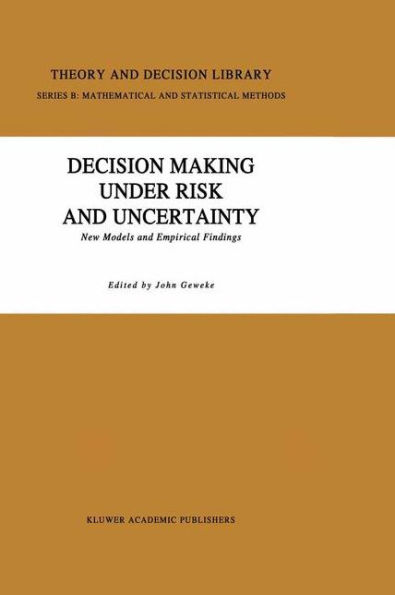5
1
9780792319047


Decision Making Under Risk and Uncertainty: New Models and Empirical Findings / Edition 1 available in Hardcover

Decision Making Under Risk and Uncertainty: New Models and Empirical Findings / Edition 1
- ISBN-10:
- 0792319044
- ISBN-13:
- 9780792319047
- Pub. Date:
- 08/31/1992
- Publisher:
- Springer Netherlands
- ISBN-10:
- 0792319044
- ISBN-13:
- 9780792319047
- Pub. Date:
- 08/31/1992
- Publisher:
- Springer Netherlands
219.99
In Stock

Product Details
| ISBN-13: | 9780792319047 |
|---|---|
| Publisher: | Springer Netherlands |
| Publication date: | 08/31/1992 |
| Series: | Theory and Decision Library B , #22 |
| Edition description: | 1992 |
| Pages: | 262 |
| Product dimensions: | 6.10(w) x 9.25(h) x 0.24(d) |
From the B&N Reads Blog
